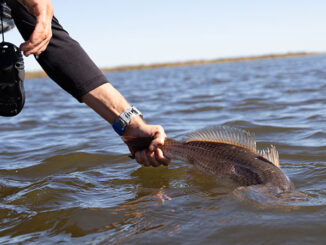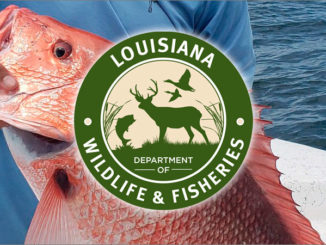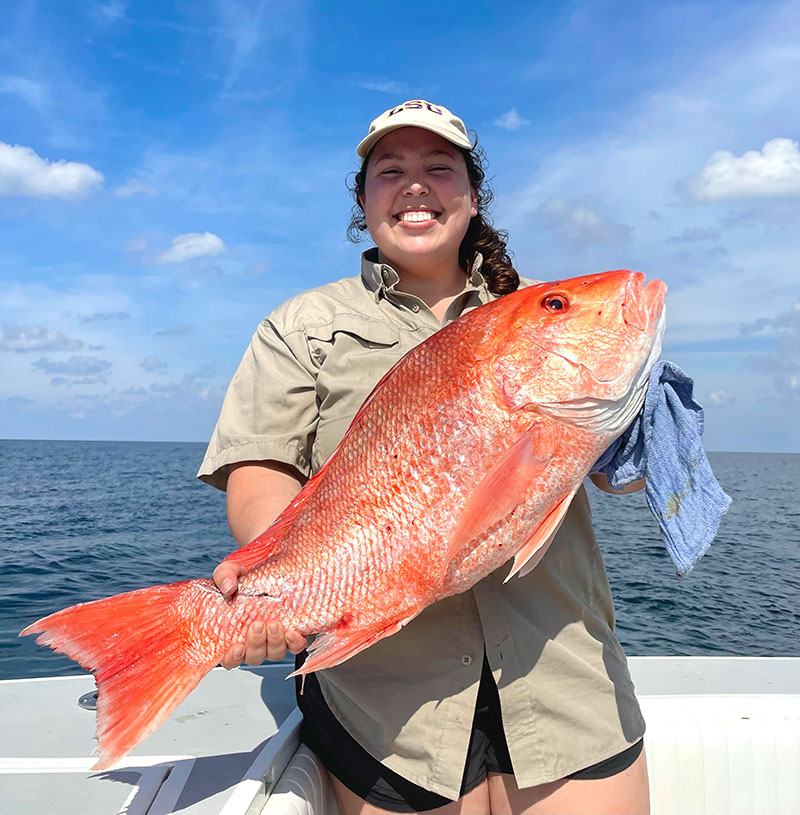
Gulf’s waters provide a veritable jigsaw puzzle of angling opportunities
The eastern horizon glowed pink with the dawning of a hot new summer day as we departed CoCo Marina in Cocodrie heading south. First, we needed to “make bait.”
The captain spotted baitfish schools swarming on the surface. He tossed a sabiki rig, several tiny jigs attached to the same line, toward the schools. Soon, he dropped swarming little fish into the baitwell.
“We caught our first two species if you want to count baitfish,” said Tommy Pellegrin with Custom Charters (985-851-3304, www.customchartersllc.com) of Cocodrie who put thread herring and greenbacks in the baitwell.
We wanted to see how many species we could catch in one day. First, we pulled up to a petroleum rig and soon added red snapper, mangrove snapper, gag grouper, amberjack, king mackerel, Spanish mackerel and bluefish to the list. After catching our red snapper limit, we headed farther offshore for bigger fish.
About 60 miles from shore, we found a shrimp boat at anchor. Large shrimp boats regularly stay offshore for days. They traditionally trawl at night and anchor as the sun rises. Before going to sleep, they cull their catch of anything they can’t sell. Big fish hang around the boat waiting for their next free handout.
Chum, don’t feed
To lure fish away from the shrimp boat, Pellegrin threw generous handfuls of chum into the water, causing it to boil with activity as ravenous predators tore into the meat. Depending upon the location and water depth, anglers might catch sharks, cobia, king mackerel, wahoo, yellowfin and blackfin tuna and other predators around anchored shrimp boats.
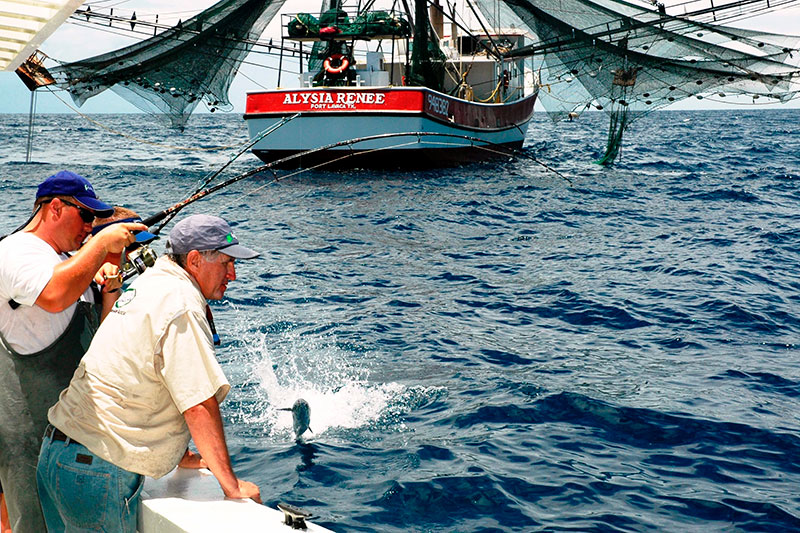
“We don’t want to feed the fish with our chum,” Pellegrin said. “We only want to get them excited. It doesn’t take much bait to keep tuna on the surface if there’s nothing else for them to eat.”
At point-blank range, we targeted individual tuna and other fish. We dangled baits over the surface until we spotted the specific fish we wanted to catch. Then, we dropped savory temptations on their noses. Before heading back to Cocodrie, our species count approached 20.
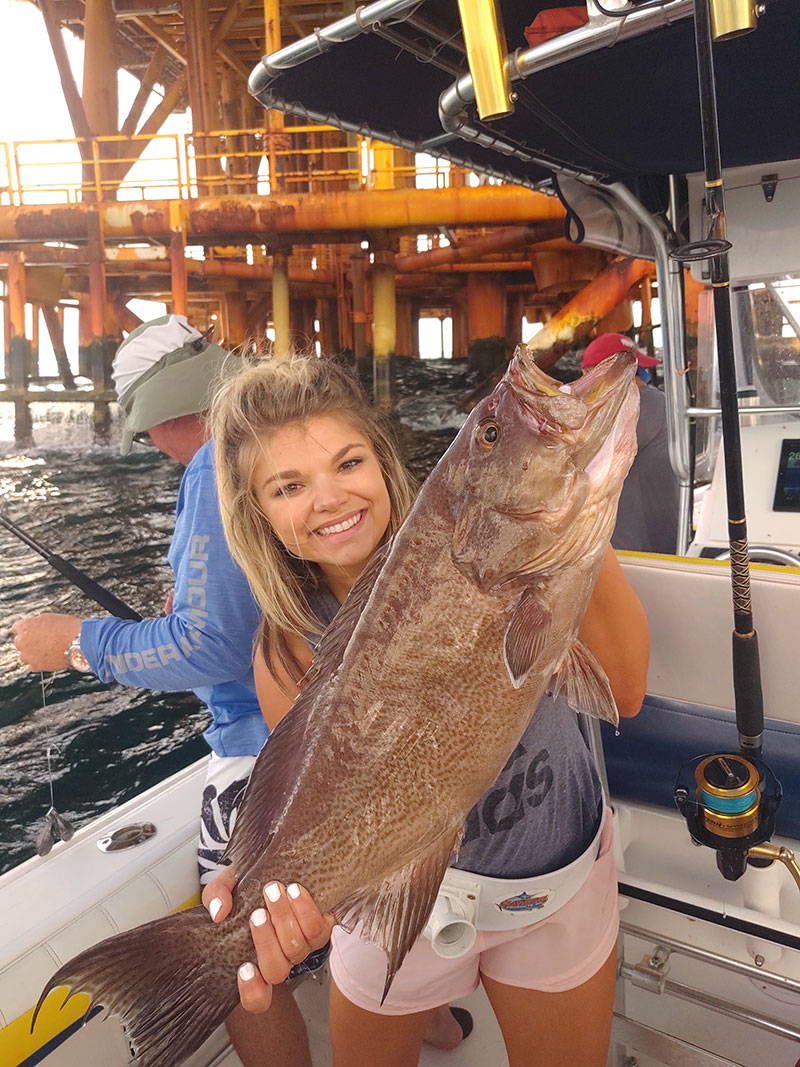
For many anglers, offshore fishing in the summer months means filling boxes with red snapper. With an abundance of the scarlet fish swimming in the Gulf of Mexico, anglers seldom struggle to land limits. With fuel prices skyrocketing, anglers want to maximize their time offshore. Fortunately, Louisiana sportsmen can enjoy wonderful bounty from various other species available to catch.
Besides red snapper, baits dropped down to a reef or next to a petroleum platform could yield several other snapper species, many with less stringent regulations than reds. The catch might include lane or candy snapper, Vermilion snapper, also called beeliners, and others. Reef fishermen might also catch triggerfish and spadefish. Skilled bait stealers, triggerfish provide enormous fun on light tackle and taste great. With their small mouths, teeth and voracious appetites, triggers can easily strip a hook clean long before it reaches bottom, leaving snapper snatchers fishing on credit.
“After catching our red snapper limit, we concentrate on beeliners,” said Jamie Gaspard with Pure Adrenalin Fishing Charters (225-572-5788, www.pureadrenalinfishingcharters.com) in Grand Isle. “For beeliners, we downsize our hooks. Sometimes when jigging near the bottom, we’ll catch a scamp. We also fish for mangrove snapper with live croakers or shrimp. When fishing for mangroves, we’ll often catch a couple cobia. Mangroves and cobia are usually up higher in the water column and we see them when the water is clear.”
Mangrove mania
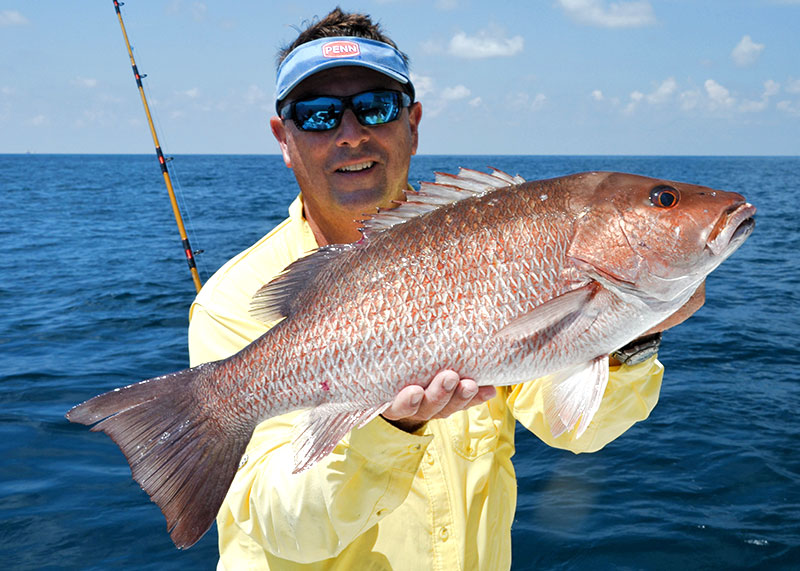
Many anglers consider mangroves the most challenging members of the snapper family. The notorious bait snatchers routinely slurp morsels while deftly avoiding the hooks. Mangroves hold tight to structure and tend to stay higher in the water surrounded by steel legs of a platform. They consistently feed near the surface and typically want live bait. They can’t resist a live croaker or pogie about 2- to 4 inches long fished on a freeline with a fluorocarbon leader. Sometimes mangroves hit lures that mimic baitfish.
“Mangrove snapper fishing is really fun around the shallow rigs,” said Drew Bateman with Paradise Outfitters (504-384-8162, www.venicefishing.com) in Venice. “We can catch them on pogies, but the best bait is a live croaker. We tie up to a rig and toss in some cut bait. When mangroves come up, we put a bait in front of them.”
Over deep reefs or platforms, bottom fishermen commonly catch amberjacks and groupers. These large, powerful predators like water at least 200 feet deep. Use live bait such as small jacks or other fish attached to heavy tackle. Pulling a monster AJ or grouper up from the depths seems like trying to crank up a refrigerator. Sometimes, anglers must use stout equipment and horsepower to yank these massive fish away from entangling structure.
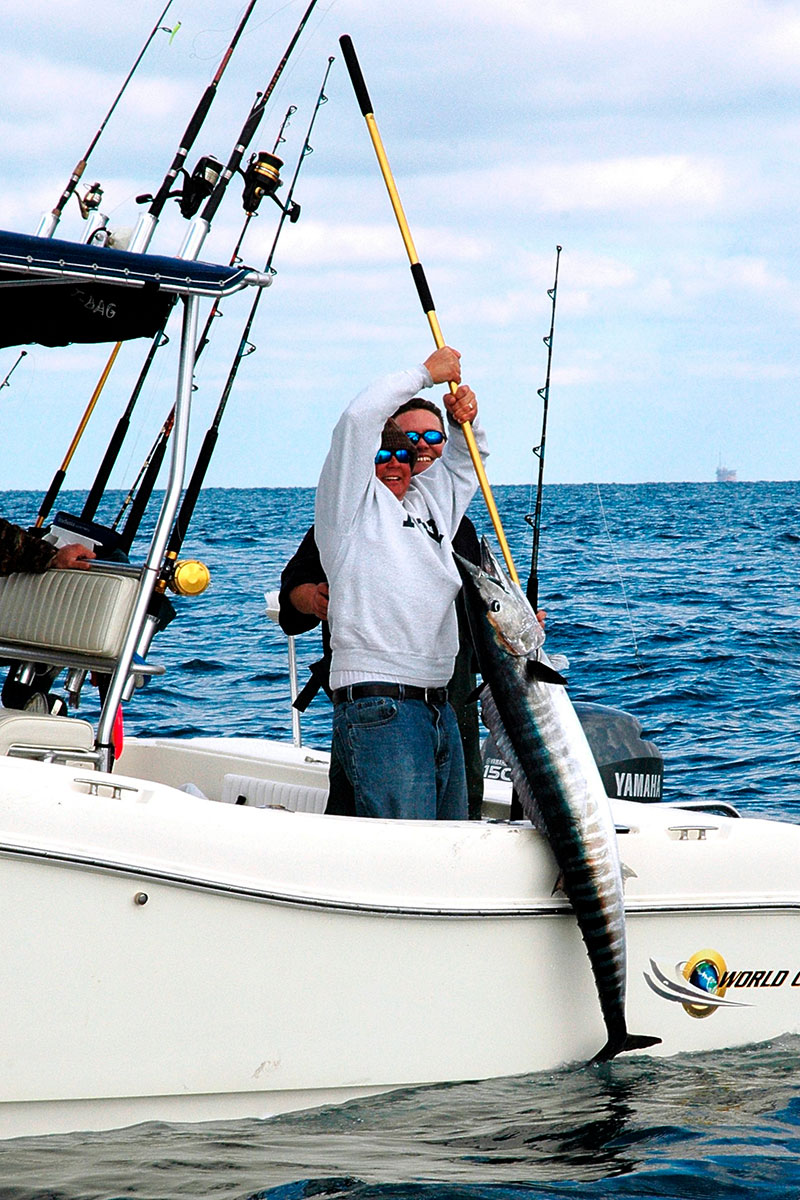
“I don’t build a whole trip around snapper,” said Joey Maciasz with Down the Bayou Charters (225-226-2781, www.downthebayoucharters.com) in Fourchon. “When we’re fishing a natural bottom for snapper, we might catch grouper and other fish. I’ve caught 14 different species in a single day. We caught about every species of grouper in the area, several snapper species, amberjack, almaco jack, blackfin tuna and a few other things.”
Even over a deep reef, not all fish stay near the bottom. While dropping down lines with heavy weights, rig a drift line with a live bait and no weight. If necessary, add just enough weight to keep the bait down in the water. Some people attach balloons to their lines to keep live baits near the surface and act as strike indicators. Toss out some chum to bring fish up to the surface. Stick the rod in a holder and wait for action.
Near the surface
Frequently, the biggest snapper feed closer to the surface. A struggling live bait or a succulent fish chunk dancing in the currents might attract king mackerel, mahi (dolphin fish or dorado) or cobia. In deeper water with the right bait, anglers could catch wahoo, tuna or perhaps even a sailfish, marlin or a swordfish.
“Not far from where people catch snapper, we catch swordfish,” Bateman said.
Curious, hard fighting and great tasting cobia commonly rise to the surface to investigate any activity and might pop up anywhere at any time. Often, they appear right next to the boat. Keep a jighead tipped with a chartreuse or white curled-tail plastic trailer or a live bait ready to pitch to a cobia on the surface. If the fish doesn’t hit the lure, tease it. When the cobia comes to sniff the bait, yank it away. Keep doing that until the fish becomes so enraged it attacks with extreme vengeance. When that occurs, no angler can move a bait fast enough to keep it away from a furious cobia.
“We never know when a cobia is going to show up, so we have to be prepared when it does,” Maciasz said. “For cobia, I like 1- to 3-ounce jigs. Sometimes, we’ll freeline a sardine to a cobia. Normally, when we hook one, two or three others will come up.”
If the cobia disappears, it didn’t necessarily leave the area. It could lurk just a few feet under the boat. Scorned by most anglers, hardhead catfish make excellent cobia enticements. If cobia rise to the surface, refuse the offerings and go down, toss out a live catfish on a drift line.
Other targets
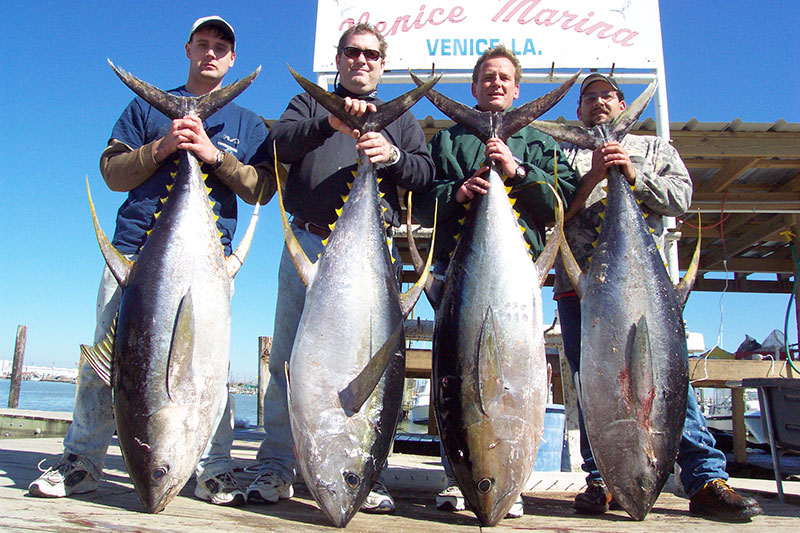
While moving from one snapper reef to another, make the most of the time by trolling live baits or various spoons, squid lures or plugs to tempt Spanish or king mackerel, tuna, mahi, wahoo and other large predators. Like ravenous sea wolves, toothy king mackerel roam the gulf looking to devour anything they can catch. They particularly like mullets.
While moving, watch for targets of opportunity. Cobia, tripletail and mahi habitually hover near weeds or other floating objects, even the most inconspicuous bits of flotsam. Look for them under buoys, driftwood, old crates, lumber, weed patches and other objects. Sight-cast live or artificial baits to them.
“Fishing for tripletail is almost like hunting,” said Erik Rue of Calcasieu Charter Service (337-598-4700, calcasieucharters.com) in Lake Charles. “We must see them before we can catch them. When I’m targeting tripletail, I get in an area with lots of floating debris. Sometimes, we see them in open water sunning themselves. If we find a grass patch with bait and activity, that’s where tripletail will be.”
For pure sport, test the awesome power of such tackle-busting brutes as bonito and jack crevalle. Many tuna fishermen use bonito chunks for fresh bait, but catching bonito on bass-class tackle offers unbelievable excitement. They hit practically anything shiny. Pound for pound, few salty scrappers fight harder than a jack crevalle. Jacks make extremely fast, powerful runs and will annihilate topwater plugs.
The fertile gulf waters deliver intense action for many species. No telling what might hit at any moment. Stay flexible and prepared. A snapper limit in the box doesn’t necessarily mean quitting time. Try different things to make the most of a day offshore.
Just keep in mind, seasons, limits and regulations vary by species and are subject to change, so always double check before keeping anything.
